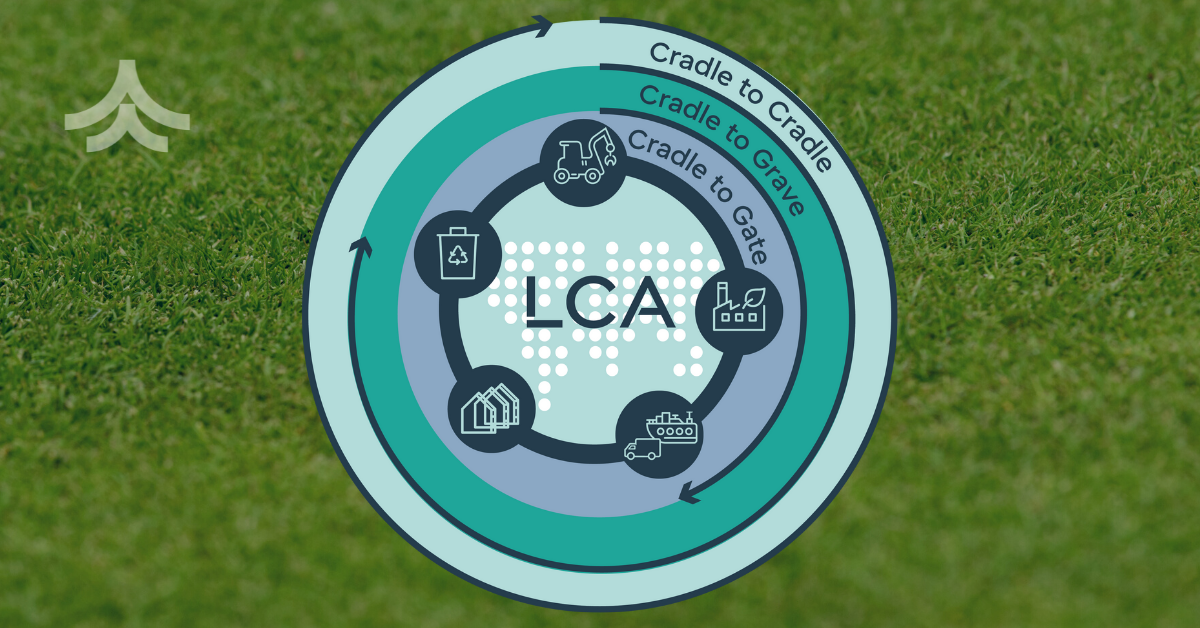The New Life-Cycle Assessment for Growing Media
Recently the attention for life-cycle assessment (LCA) related sustainability information has increased for our growing media products. So much so, that as a sector we have developed LCA guidelines through Growing Media Europe (GME) to enable better sustainability decision making. There are, however, a few things to consider when looking at LCA analyses. You can find them below.
GME published LCA guideline for growing media
What is a life-cycle assessment?
A life-cycle assessment or LCA for short is meant to provide insight into the environmental impact of products, processes and individual materials. The great part of using life-cycle assessments for growing media is that it shows the environmental impact in several stages of the life-cycle: extraction, logistics, production, use and end-of-life. It can also provide insight into more than just one topic. It is possible to show how a certain product impacts resource scarcity, carbon footprint, water consumption, biodiversity, etc.

1. A carbon footprint analysis is not a full life-cycle analysis
Although the life-cycle carbon footprint of a certain product is important to know, it tells a limited story about the overall environmental impact of a product. Perlite is for instance a material with a high carbon footprint in the production phase, but requires little water to produce. Coir (or coconut fiber) has a lower carbon footprint in the extraction phase, but chemicals and water are needed to remove excess salts before it can be used in potting soil. So, if you want to know the environmental impact of certain growing media, look beyond the carbon footprint.
2. When comparing growing media, use the same LCA methodology
There are many LCA methodologies on the market with each their own benefits, limitations, indicators and even weighing factors. Examples of well-known methodologies are CML, ILCD, IPCC, PEF and ReCiPe. It takes too long to explain each and every difference, but be aware that impact values can be ten times higher (or lower) even if expressed in the same unit. Please find a more detailed explanation of LCA methodologies here. Because of all these different approaches GME developed the new LCA guidelines based on the PEF methodology. This was developed in the context of the European Commission’s “Roadmap to a Resource Efficient Europe” and it is expected to become one of the most used LCA methodologies in Europe.
3. And ensure the LCAs have the same scope
Whether or not you are using the same methodology, it is important to use the same scope as well. For example, it can make a big difference when inbound logistics is calculated based on the distance between harvesting point (e.g. coconut plantation) or distributor (e.g. local harbor) and the growing media producer. Another difference in scoping that can have a huge impact is when certain life-cycle stages are excluded. Well-known terms in this respect are ‘cradle to gate’ (excludes use phase and end-of-life phase) and ‘cradle to grave’ (includes all life-cycle stages), each of them referring to a different LCA scope.
4. An LCA tells you little about actual growing media performance
There is a very important aspect that tells you a lot about the sustainability of growing media and that is; does it serve its purpose? For example, compost in general has a low environmental impact but the salt content is usually too high to use it as the only ingredient for a growing media recipe. Similarly wood fiber is a renewable material with a relative low environmental impact, but the nitrogen fixation usually means fertilizer has to be added to the growing media mix to ensure enough nitrogen will be available for plants to grow. If these kind of aspects are not taking into account when comparing growing media, the wrong conclusions maybe drafted. The sustainability assessment of growing media should, therefore, include the effectiveness of addressing the grower’s (and downstream) needs.
5. But it is a great tool when used properly
Nevertheless, once the attention points above are taken into account, an LCA can be a great way to create a better understanding of the environmental performance of growing media. It can help in improving sustainability performance, holding broader and fact-based stakeholder discussions and support internal decision making. Life-cycle assessments certainly deserve the attention they are currently given, but be aware of the potential limitations.
By Folkert Moll – Sustainability Manager at Kekkilä-BVB
To learn more about our growing media in general, have a look out Our Growing Media Page